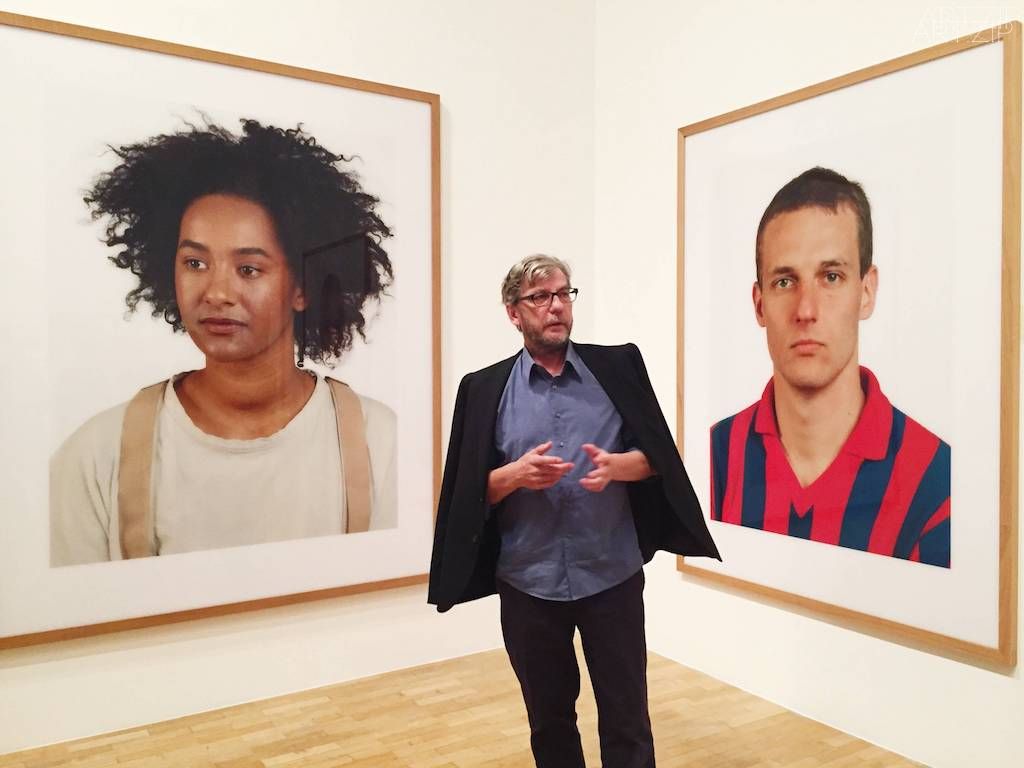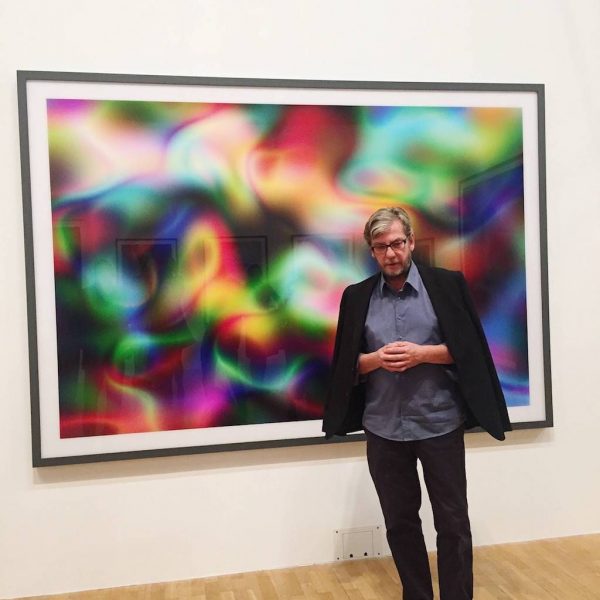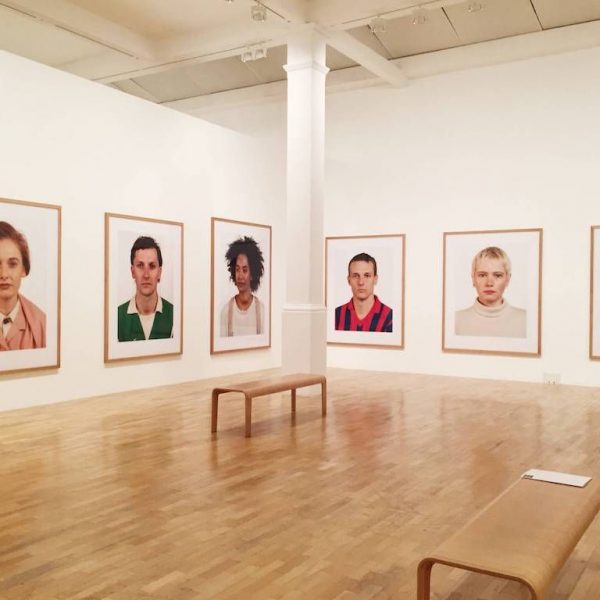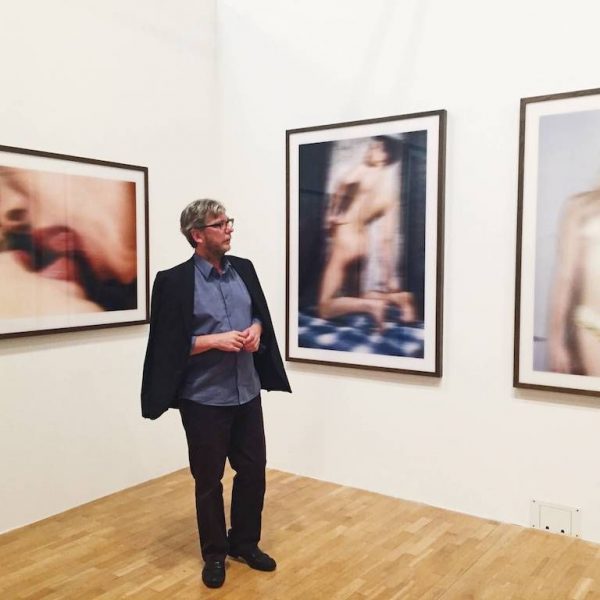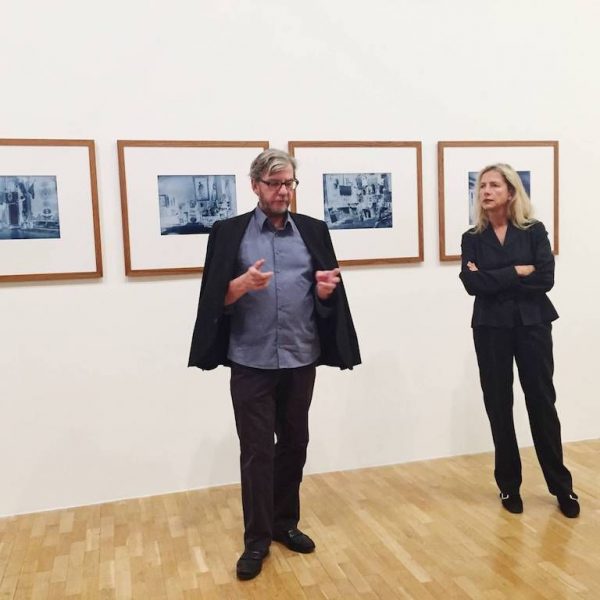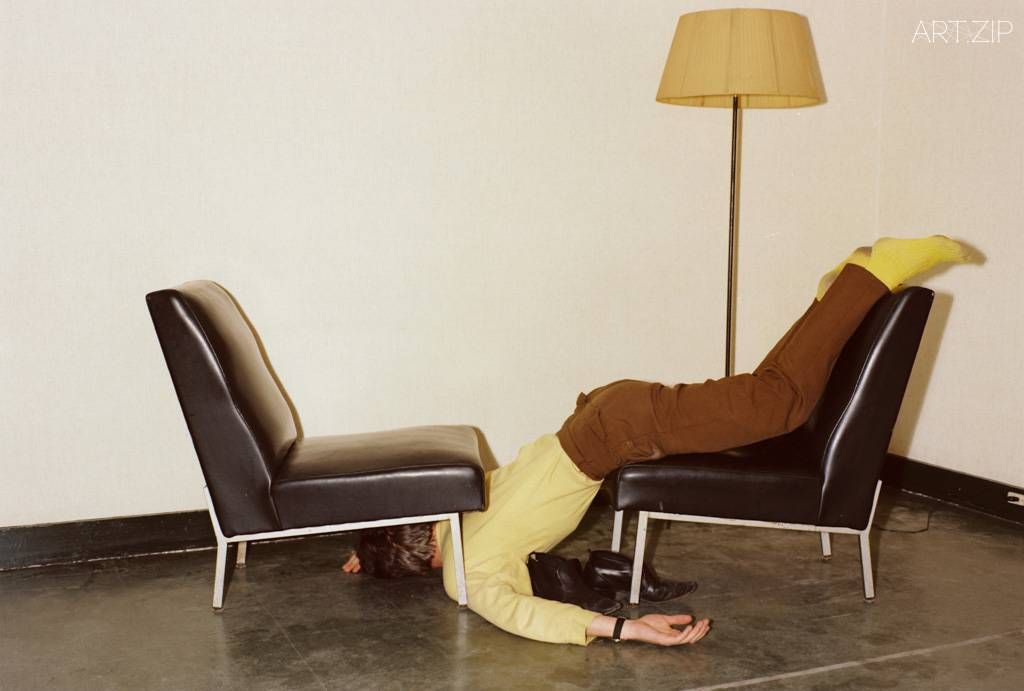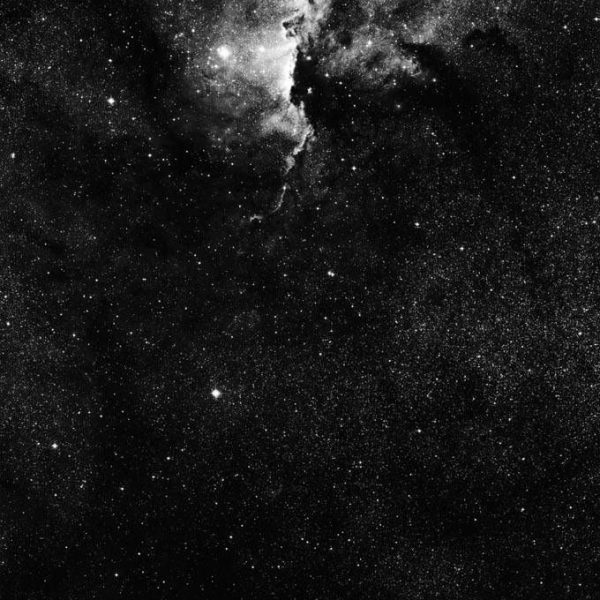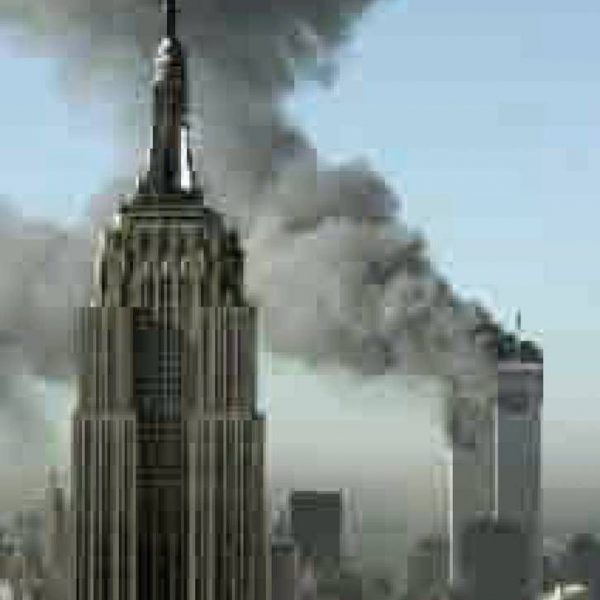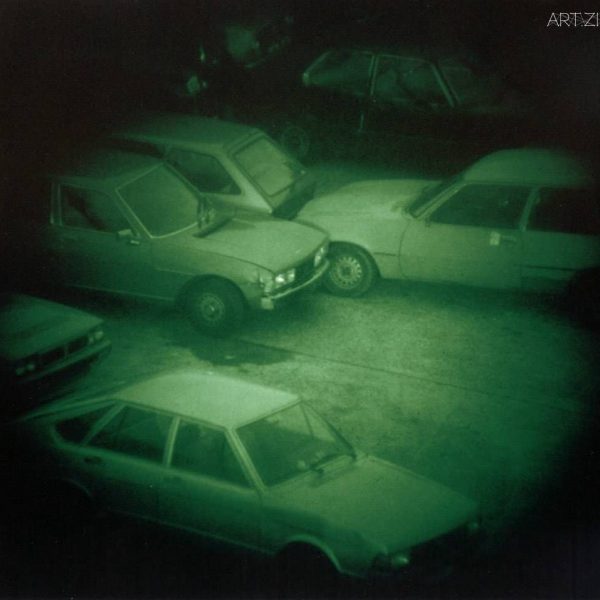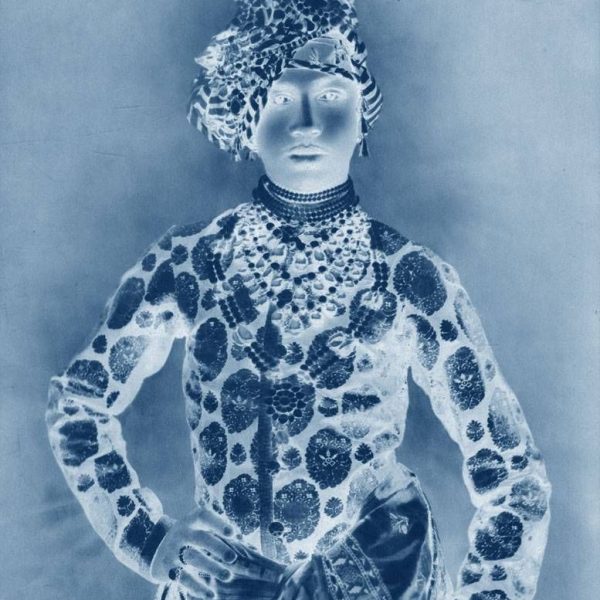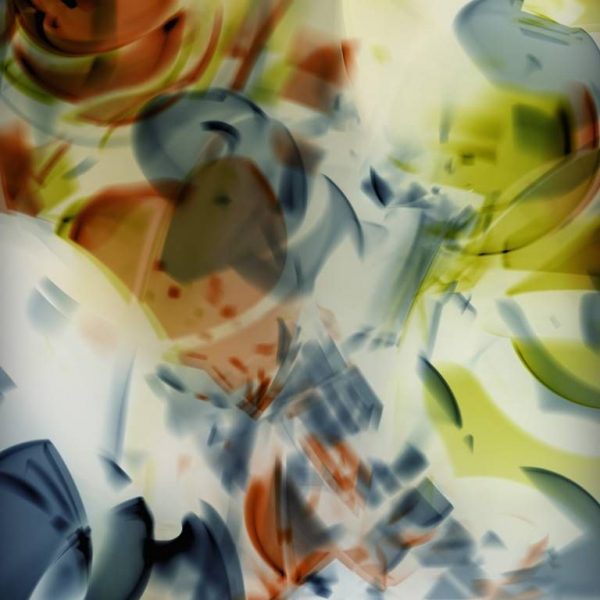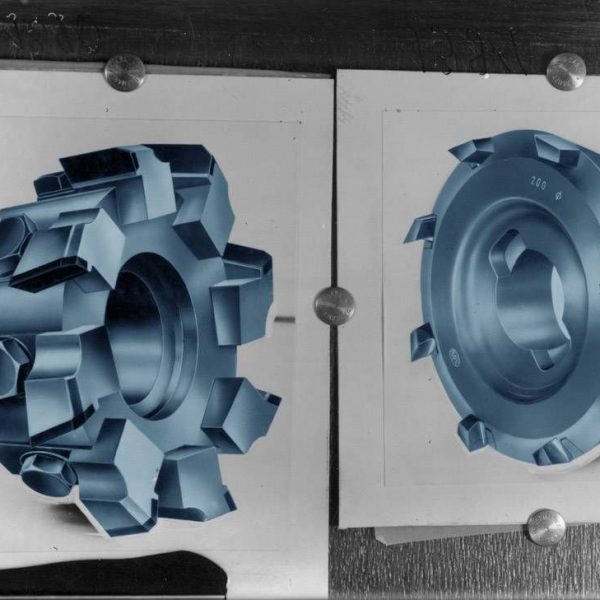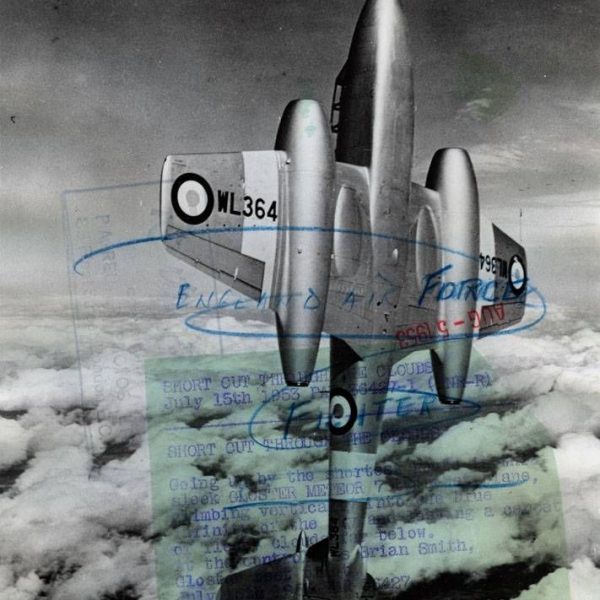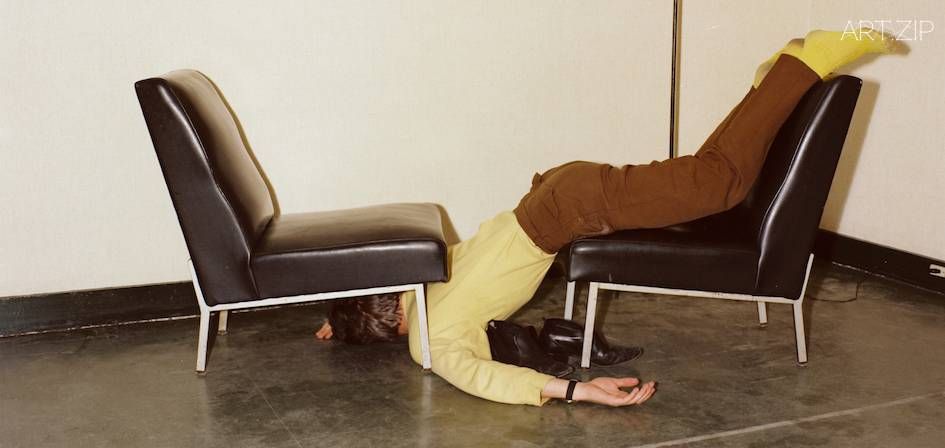
Whitechapel Gallery
27 September 2017—21 January 2018
Thomas Ruff (b.1958, Zell am Harmersbach, Germany) began his career in the 1970s as a student at the renowned art school Staatliche Kunstakademie in Düsseldorf. Known for taking a critical, conceptual approach to photography, Ruff explores themes as diverse as utopianism, suburbia, advertising culture, pornography and surveillance. From the 1970s to today, Ruff has worked in series, with each body of work making use of different image-making technologies.
The exhibition titled Thomas Ruff is curated by Whitechapel Gallery Director Iwona Blazwick. It is the artist’s first major London retrospective, and includes a number of his most recent works. Organised thematically, it begins with Ruff’s exploration of questions of scale, the cosmic and the everyday. On show in the ground floor gallery is L’Empereur (1982), a sequence of eight images which depict the artist in a range of exaggerated slumped poses with two chairs and a yellow floor lamp. Made while the artist was in Paris, Ruff turns the camera on himself and acts as a prop in a narrative still life. Porträts (Portraits) (1986–91; 1998–), Ruff’s series of passport-style portraits reproduced on a huge scale, reveal every surface detail of their subjects. These are displayed alongside Sterne (Stars) (1989–92), photographs taken by a high-performance telescope at the European Southern Observatory and two additional series Maschinen (Machines) (2003–) and m.a.r.s. (2010–).
The display continues with one of the artist’s earliest series Interieurs (Interiors) (1979–83), which documents rooms inside the houses of his friends and acquaintances in Düsseldorf. The interiors are shot in a detached way, revealing human traces but with the occupants themselves absent. Alongside these are large-scale works from his 2004 jpeg series of pixelated images depicting nature and disaster. In Gallery 9 Nächte (Nights) (1992–96) photographs are presented alongside andere Porträts (Other Portraits) (1994–95), which examine both the technology and imagery of surveillance and policing.
Gallery 8 includes Häuser (Houses) (1987–91), studies of ordinary suburban buildings, devoid of human presence and shot in the style of architectural photography. Alongside these are two series deriving from the types of imagery that might be at home in the suburban bedroom. The nudes (1999–) are blurred images of internet pornography, while the Substrate (Substrates) (2001–) are vividly colourful works deriving from Japanese manga and anime, which have been adapted using computer software. These go on show alongside two recent series Fotogramme (Photograms) (2012–) and Negative (Negatives) (2014).
The exhibition closes on a moment of resonance with contemporary political debates – two series which question the documentary value of press photography. The Zeitungsphotos (Newspaper Photographs), conceived in the early 1990s, reproduce photographs which the artist cut out of German newspapers and weekly magazines. Without captions or headlines, they allude to urgent events which, divorced from their original context, take on opaque meanings. Ruff’s recent press++ (2015–) works make use of retired archival photographs from several decades of American newspapers. Editorial marks, instructions and cropping are reproduced, showing how images from the era of the space race or of Hollywood starlets were retouched.
托馬斯·魯夫在1958年出生於德國澤爾,在1970年代就讀著名的杜塞爾多夫藝術學院,在那裡他正式開啟了自己的職業生涯。魯夫涉及的主題極為豐富,其中包括烏托邦主義、郊外風俗、廣告文化、色情和監視等等。從70年代至今魯夫創作了一系列的攝影作品,同時每一個單獨的作品都使用了不同的圖像製作技術。無論是簡單直接的人像建築,還是交錯重疊的色塊圖形,每個攝影作品系列都彷彿呈現托馬斯·魯夫的不同人格,時而冷淡漠然,時而熱情洋溢。從拿起相機拍攝原創作品再轉向加工處理網絡圖片,近四十年來這位德國藝術家作品中的永恆感依然濃烈如初。
《托馬斯·魯夫》由白教堂畫廊館長伊沃納·博拉維克親自策展,這是魯夫在倫敦的首個大型回顧展,其中包括了他的大量新作。展覽按照主題劃分,並以魯夫對圖片比例的質疑、宇宙空間和日常生活進行的思考作為開端。在一樓展出的《皇帝》(1982)系列由八幅圖片組成,作品中藝術家在兩把椅子和一個黃色落地燈之間擺著各種誇張的摔倒姿勢。藝術家在巴黎創作了這系列作品,他將鏡頭轉向自己並把自己作為敘事靜物中的支柱角色。在《肖像》(1986-91; 1998-)系列中,魯夫使用大畫幅拍攝護照風格的肖像,只求清晰地展示圖中對象的每個表面細節。“我會去掉一切不必要的東西,人們不需要拿著一朵花,甚至不需要表情”,魯夫這樣解釋這些看似平淡卻又雋永的肖像作品。“我想讓肖像回到原點。”與這些作品一同展示的還有用歐洲南方天文台的高性能望遠鏡拍攝的《星辰》(1989-92)、用工廠檔案改造的《機器》(2003-)和將NASA的黑白圖片進行填色的《m.a.r.s.》(2010-)。
展覽還展出了藝術家最早期的作品之一,如紀錄片式地記錄著他在杜塞爾多夫的朋友和熟人住所內部的《室內》(1979-83)。 他鏡頭下的建築內部帶著一種客觀超然的意味,儘管圖中並沒有人在場,卻處處都顯露著人存在過的深刻痕跡。除了這些作品外,魯夫創作於2004年、以像素化圖像描繪自然和災難的大型作品系列《jpeg》也在這裡展出。使用夜視透鏡拍攝的《夜晚》(1992-96)與用警方的圖片生成設備合成的《其他肖像》(1994-95)被放在畫廊9,共同探討監視和監管這個主題時所用到的技術和意象。
畫廊8展出的《房屋》(1987-91)是針對普通郊區建築的研究,並採用建築攝影的風格拍攝。魯夫表示他只想專注於建築本身,因此這系列作品中同樣完全沒有人類的蹤影。與之一同展出的還有兩個用現成圖片加工創作的系列:《裸體》(1999-)將低像素的網絡色情圖像進行模糊處理,而五光十色的《基底》(2001-)則是源自日本漫畫和動漫,並通過計算機軟件進行疊加調整而成。此外這裡還有兩個近期的作品,《物影》(2012-)和《底片》(2014)。
展覽以兩個向新聞攝影的紀實價值提出質疑的系列作為結尾,以表現當代政治議題在魯夫心中引起共鳴的時刻。構思於上世紀90年代初的《報紙照片》翻印了藝術家從德國報紙和週刊上剪下的照片。雖然沒有說明文字或標題,但是這些圖片卻影射了當前的緊急事件,他們脫離原有的新聞背景並擁有全新的涵義。魯夫的最新作品《新聞++》(2015-)採用的便是這幾十年來美國報紙的廢棄檔案照片,作品上的編輯標記、指示和裁剪充分顯示了在太空競賽、好萊塢明星時代圖片的潤色方法。

